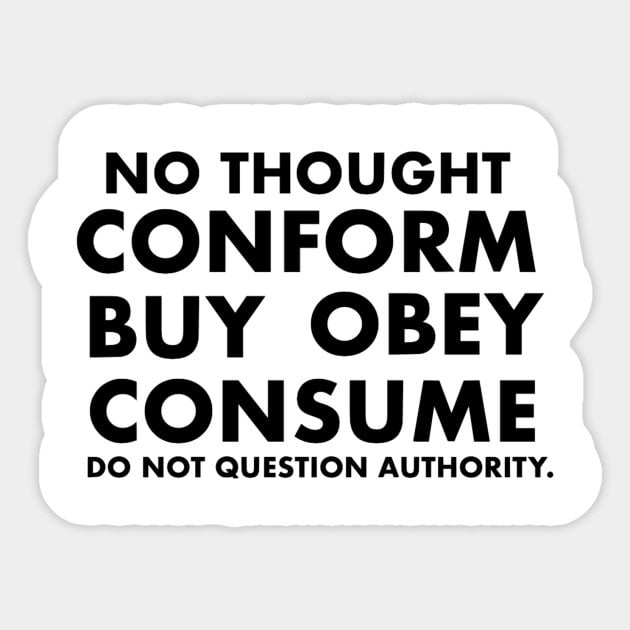ORIGINAL LINK
By the looks of it, we are about to face one of the most aggressive vaccine campaigns ever created. According to Reuters,1 the U.S. government is planning to launch an “overwhelming” COVID-19 vaccine campaign come November, provided the U.S. Food and Drug Administration gives one or more vaccine candidates the green light.
Considering former FDA commissioner Dr. Scott Gottlieb2 is now on Pfizer’s board of directors,3 and Pfizer’s COVID-19 vaccine is one of the lead candidates, jaded minds might assume the FDA isn’t going to put up any significant roadblocks.
According to Reuters, the COVID-19 vaccine campaign “will likely be compressed into a short period of time, around four to six weeks, to eliminate any lag between when Americans are alerted to the vaccine and then they can get vaccinated.” An unnamed “senior White House administration official” is quoted saying:4
“The fine line we are walking is getting the American people very excited about vaccines and missing expectations versus having a bunch of vaccines in the warehouse and not as many people want to get it. You may not hear a lot about promoting vaccines over the airwaves in August and September but you’ll be overwhelmed by it come November.”
It’s still unclear exactly when a vaccine will be available, but it could be as early as October, or as late as January 2021. According to the administration official, the advertising campaign for the vaccine will be tailored to specific subsets of the population, depending on the people the vaccine is likely to benefit the most. Such details are expected to be teased out during ongoing clinical trials.
Study Underway to Identify Most Effective Messaging
The idea that the vaccine promotion might be more “overwhelming” than what we’re used to is further supported by a clinical study5 on ClinicalTrials.gov, the aim of which is to identify the most “persuasive messages for COVID-19 vaccine uptake.”
The study, conducted by Yale University, will test “different messages about vaccinating against COVID-19 once the vaccine becomes available.”
A total of 4,000 participants will be randomized to receive one of 12 different messages (10 messaging variations, one control message and one baseline message), after which they will “compare the reported willingness to get a COVID-19 vaccine at three and six months of it becoming available.” The messaging slants under investigation include:6
Personal freedom message — A message about how COVID-19 is limiting people’s personal freedom, and how society, by working together to get enough people vaccinated, can preserve its personal freedom.
Economic freedom message — A message about how COVID-19 is limiting people’s economic freedom, and how society, by working together to get enough people vaccinated, can preserve its economic freedom.
Self-interest message — A message that COVID-19 presents a real danger to one’s health, even if one is young and healthy, and how getting vaccinated against COVID-19 is the best way to prevent oneself from getting sick.
Community interest message — A message about the dangers of COVID-19 to the health of loved ones: The more people who get vaccinated against COVID-19, the lower the risk that one’s loved ones will get sick. Society must work together and all get vaccinated.
Economic benefit message — A message about how COVID-19 is wreaking havoc on the economy and the only way to strengthen the economy is to work together to get enough people vaccinated.
Guilt message — A message is about the danger that COVID-19 presents to the health of one’s family and community. Therefore, the best way to protect them is not only by getting vaccinated, but to get society to work together to get enough people vaccinated. Then a test question asks the participant to imagine the guilt they will feel if they don’t get vaccinated and then spread the disease.
Embarrassment message — A message is about the danger that COVID-19 presents to the health of one’s family and community: The best way to protect them is by getting vaccinated and by working together to make sure that enough people get vaccinated. Then it asks the participant to imagine the embarrassment they will feel if they don’t get vaccinated and spread the disease.
Anger message — The message is about the danger that COVID-19 presents to the health of one’s family and community. The best way to protect them is by getting vaccinated and by working together to make sure that enough people get vaccinated. It then asks the participant to imagine the anger they will feel if they don’t get vaccinated and spread the disease.
Trust in science message — A message about how getting vaccinated against COVID-19 is the most effective way of protecting one’s community, that vaccination is backed by science: If one doesn’t get vaccinated that means that one doesn’t understand how infections are spread or you are one who ignores science.
Not brave message — A message which describes how firefighters, doctors and front line medical workers are brave: Those who choose not to get vaccinated against COVID-19 are not brave.
While the study was completed July 8, 2020, results have yet to be publicly posted. Clearly, this is not the first time researchers have investigated the most effective propaganda angles, but the types of messages listed above really demonstrate just how insidious these types of campaigns can be.
It’s really all about manipulation — pushing the right mental and emotional hot-buttons to fire up a desired response, all while overriding more logical thought processes.
The propaganda push has already started, it seems, with USA Today publishing an article7 titled “Defeat COVID-19 by Requiring Vaccination for All. It’s Not Un-American, It’s Patriotic.” This is precisely the kind of PR we can expect more of in the months to come.

The manipulation aspect is equally if not more evident in the listed secondary outcome measures, which include:
- Participants’ confidence in the safety and effectiveness of the vaccine
- Participants’ willingness to persuade others to get vaccinated
- Their fear of those who have not been vaccinated
- The social judgment of those who choose not to vaccinate
Effective Totalitarianism Relies on You Enjoying Servitude
A quote from Aldous Huxley’s dystopian 1932 book, “Brave New World,” reads:
“A really efficient totalitarian state would be one in which the all-powerful executive of political bosses and their army of managers control a population of slaves who do not have to be coerced, because they love their servitude.”
Huxley’s quote starts off a thought-provoking article8 on The Burning Platform that reviews the rise of totalitarianism and parallels presented in popular works of fiction. The author notes Huxley’s book came on the heels of Edward Bernays’ 1928 book, “Propaganda” — a must-read for anyone interested in understanding the historical foundations of modern public relations. The article points out that, in his book, Bernays:9
“… revealed the existence of an invisible government who used propaganda to manipulate the minds of the public to insure those controlling the levers of power were able to engineer their desired outcomes.”
A contemporary to Huxley and Bernays was George Orwell, who wrote the cult classic “1984.” In 1949, Huxley reportedly wrote to Orwell, stating he believed the world’s rulers would soon “discover that infant conditioning and narco-hypnosis are more efficient as instruments of government than clubs and prisons, and that the lust for power can be just as completely satisfied by suggesting people into loving their servitude as by flogging and kicking them into obedience.”10
At its heart, technocracy is an economic system, not a political one. The system also hinges on the skillful implementation of social engineering.
Huxley believed the nightmarish existence presented in “1984” was “destined to modulate into the nightmare of a world having more resemblance to that which I imagined in ‘Brave New World'” and that this transition would be the result of “a felt need for increased efficiency.” While Huxley did not use the word “technocracy,” that’s essentially what he was talking about.
Technocracy 101
Technocracy is an economic and social engineering system that got started in the 1930s during the height of the Great Depression, when scientists and engineers got together to solve the nation’s economic problems.
The Trilateral Commission’s co-founder Zbigniew Brzezinski, a Columbia University professor, brought the concept of technocracy into the Commission in 1973, with the financial support of David Rockefeller. Technocrats have silently and relentlessly pushed forward ever since, and their agenda is now becoming increasingly visible.
At its heart, technocracy is an economic system, not a political one. It actually calls for, indeed demands, the total dismantling of the political system, which includes the U.S. Constitution. In fact, the Constitution is the only thing that has kept technocracy at bay this long in the U.S.
The system also hinges on the skillful implementation of social engineering. Once fully implemented, people won’t have the ability to effectively fight it, but until then, through peaceful civil disobedience, the sharing of information and the exercise of political power, we still have a chance to prevent it.
Time is running short, however. As noted by The Burning Platform,11 “Since 9/11, the United States has unequivocally moved in the direction of Orwell’s 1984 vision,” and “We are now experiencing a dystopian amalgamation of the worst of both novels,” referring to “1984” and “Brave New World.”
Unfortunately, many still cannot see the full picture, nor understand the ultimate real-world danger of unquestioning compliance with ever-more illogical and freedom-quenching recommendations and mandates.
Technocracy Demands the Abolishment of Political Systems
Under technocratic rule, nations are to be led by unelected leaders who decide which resources companies can use to make certain products, and which products consumers are ultimately allowed to buy. Technocracy is essentially a resource-based economic system in which energy and social engineering run the economy rather than pricing mechanisms such as supply and demand.
Patrick Wood — an economist, financial analyst and American constitutionalist — has devoted a lifetime to uncovering the mystery of what is controlling most of the craziness we’re currently seeing, and which has been exacerbated by the COVID-19 pandemic. I go into more details on technocracy in my interview with Patrick Wood.
His two books, “Technocracy Rising: The Trojan Horse of Global Transformation” and “Technocracy: The Hard Road to World Order” delve into this new world order in greater depth. You can listen to our interview below.
Download Interview Transcript
Science Has Been Misused for Decades
Importantly, science is a primary tool used to manipulate society and keep the economic engine running under the technocratic system. As explained by Wood, technocracy uses science to issue suggestions, to start. But those suggestions rapidly turn into mandates, which is precisely what we’ve been seeing during this pandemic. We’ve also seen this with vaccines in general.
But the COVID-19 pandemic has also revealed there’s a much larger plan that includes implantable digital identifications, medical records and vaccine passports, digital currency and banking — all of which will ultimately be tied together so that algorithms and automation will be able to keep everyone in line, everywhere, all the time.
Rule by Algorithm
An important tool used to drive the technocratic agenda forward is what Huxley pointed out, namely efficiency. In the name of efficiency and convenience, we are being inundated with an ever-increasing amount of “smart” technology that tracks everything everyone says and does, and artificial intelligence that sorts, interprets and spits out recommendations based on all that data.
This technological infrastructure is crucial for the technocracy, as the ultimate goal is to essentially automate slavery. The idea is that society will be ruled by automated algorithms, thus rendering a political structure irrelevant. Everyone will be automatically kept in line by technology.
For example, you might be told via text message that it’s time to get your annual vaccination. You go there, get the shot, and receive a digital vaccine certificate. Should you get the bright idea to refuse, your bank accounts get automatically frozen, the electronic door pass to your office won’t work, and you won’t be allowed to pass through the electronic check point at the grocery store.
No human authority is required in that system. There won’t be anyone to complain to or debate with. You’re herded into compliance by the fact that you have to do certain things in order to be allowed to participate in society. It sounds crazy, but if you look around, you’ll see clear evidence that this system has been slowly implemented all around us, for decades.
And, when you look at the statements from people like Bill Gates, in conjunction with the technologies he and others are implementing in various parts of the world (such as digital identification, currency, vaccine certificates and medical records, along with implantable chips to track employee attendance, smart appliances and entire smart cities, just to name a few), you can begin to see how the control loop is closing in around us.
In her book, “The Age of Surveillance Capitalism,” professor Shoshana Zuboff exposes the stunning capacities currently available to surveil, analyze and manipulate our behavior. It’s crucial to realize that as bad as it is today, the predictive power of technology is advancing at an exponential rate, which means their ability to manipulate behavior is increasing at a pace we cannot fully comprehend.
Regaining Control of Local Government Is Key
Importantly, technocrats are currently making an end run around national sovereignty. Rather than a frontal assault on the system, which has never been successful, they’ve simply eroded national sovereignty piece by piece. What can we can do to thwart the steady march of technocracy?
As explained by Wood, the most effective way is through local activism. The technocratic system was built from the bottom up, so we cannot tear it down from the top down. They’re already far too powerful for that. So, to begin the dismantling process, we must regain control of our local governments, and work our way up from there.
One of the most important elected local officials that you should concern yourself with is your sheriff. Sheriffs are responsible for enforcing tyrannical edicts from local, state and federal government, and if they choose not to, government has no power. City councils also have a lot of power. They can pass binding resolutions to protect citizens against the technocratic agenda.
1 Person in 40 Is Injured by Vaccines
Getting back to the issue of the COVID-19 vaccine, I urge you to keep a cool head once the PR machine gains speed. Read through the propaganda messages again (above) and familiarize yourself with them so you can identify the buttons they’re trying to push.
Remember, the COVID-19 vaccines currently leading in development have never before been licensed for human use, and there’s no possible way to ascertain what the long-term ramifications might be when you turn your body into a viral protein factory. I’ve discussed the theory behind mRNA vaccines in several previous articles, including “Gates Tries to Justify Side Effects of Fast-Tracked Vaccine.”
Coronavirus vaccine efforts gained speed in early 2002, following three SARS epidemics. However, such efforts have proven highly problematic as coronavirus vaccines have a stubborn tendency to trigger paradoxical immune responses.
In my interview with Robert F. Kennedy Jr., who chairs the board of directors of the Children’s Health Defense,12 he reviewed some of the failed efforts to produce a viable coronavirus vaccine and highlighted the dangers of vaccine exaggeration of the immune response:
“The Chinese, the Americans, the Europeans all got together and said, ‘We need to develop a vaccine against coronavirus.’ Around 2012, they had about 30 vaccines that looked promising. They took the four best of those and … gave those vaccines to ferrets, which are the closest analogy when you’re looking at lung infections in human beings.
The ferrets had an extraordinarily good antibody response, and that is the metric by which FDA licenses vaccines … The ferrets developed very strong antibodies, so they thought, ‘We hit the jackpot.’ All four of these vaccines … worked like a charm.
Then something terrible happened. Those ferrets were then exposed to the wild virus, and they all died. [They developed] inflammation in all their organs, their lungs stopped functioning and they died.”
So please, review ALL the vaccine studies BEFORE you get the COVID vaccine because as far as I have read, this essential part of the study — ensuring that no paradoxical immune enhancement will occur — has not yet been done.
Even with conventionally manufactured vaccines, data from the U.S. Department of Health and Human Services Agency for Healthcare Research Quality suggests vaccine damage occurs in 2.6% of all vaccinations. This means 1 in 40 people — not 1 in 1 million, which is what we’ve been repeatedly told — is injured by vaccines. Kennedy Jr. reviewed this data in a recent online vaccine debate13 with attorney and legal scholar Alan Dershowitz.
The U.S. Vaccine Court has also paid out $4 billion to patients permanently damaged or killed by vaccines, and that’s just a small portion of all the cases filed. According to Kennedy, less than 1% of people who are injured ever get to court, due to the high bar set for proving causation.
Will the novel mRNA COVID-19 vaccines be more dangerous than conventional vaccines, or will they be safer? Considering these vaccines are being fast-tracked and are forgoing all traditional animal testing and long-term evaluation, I suspect they may end up having far more unanticipated complications.
So, as the vaccine campaign rolls out, remember to weigh whatever potential risks and benefits that might apply in your particular situation, and avoid falling for emotional triggers.
Regardless of what you decide, also try to accept the personal decisions of others. The PR campaign will clearly try to manipulate you into fearing those who chose not to vaccinate, and trigger you into condemning them. Hopefully, knowing that you are being manipulated will help ease these tendencies.
Sources and References
- 1, 4 Reuters July 30, 2020
- 2 FDA.gov Scott Gottlieb
- 3 Pfizer June 27, 2019
- 5, 6 Clinicaltrials.gov COVID-19 Vaccine Messaging, Part 1, Identifier: NCT04460703
- 7 USA Today August 10, 2020
- 8, 9, 10, 11 The Burning Platform, Are You Loving Your Servitude?
- 12 Children’s Health Defense Board of Directors
- 13 YouTube Vaccine Debate — Kennedy Jr. vs Dershowitz, July 23, 2020

The post Testing the Most Effective Method To Manipulate Minds appeared first on LewRockwell.
via
IFTTT
InoreaderURL:
SECONDARY LINK














